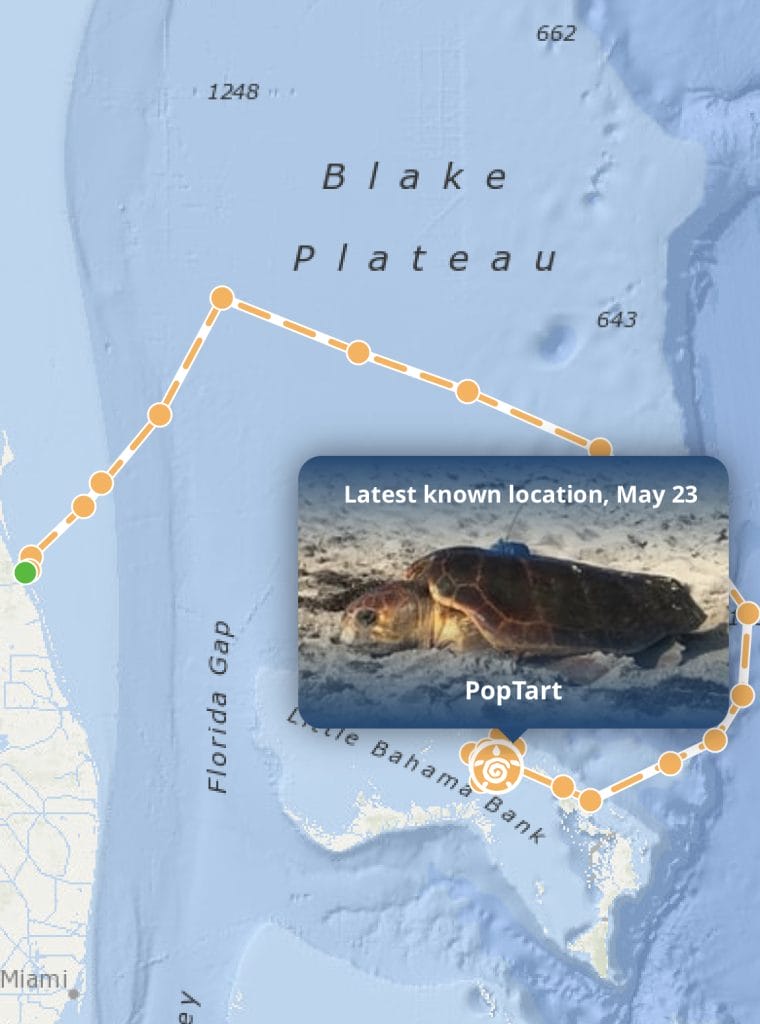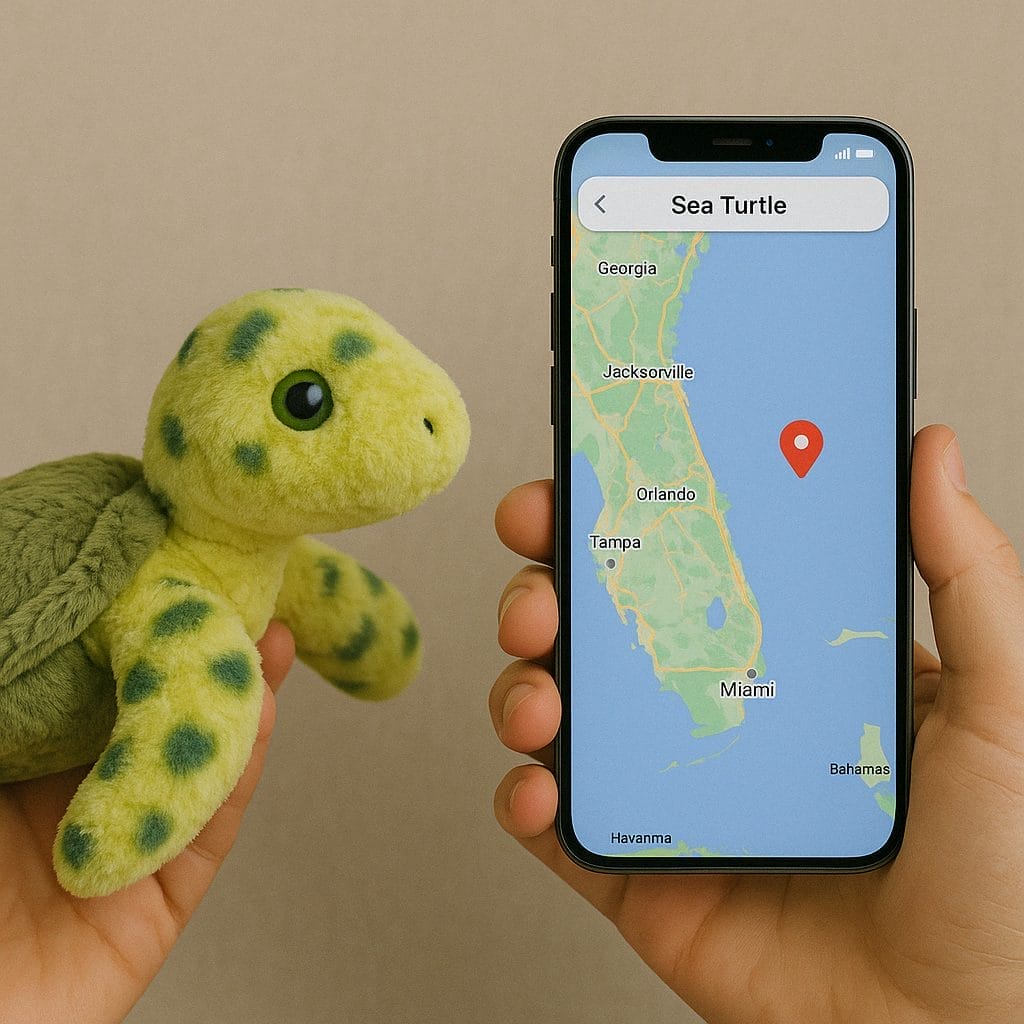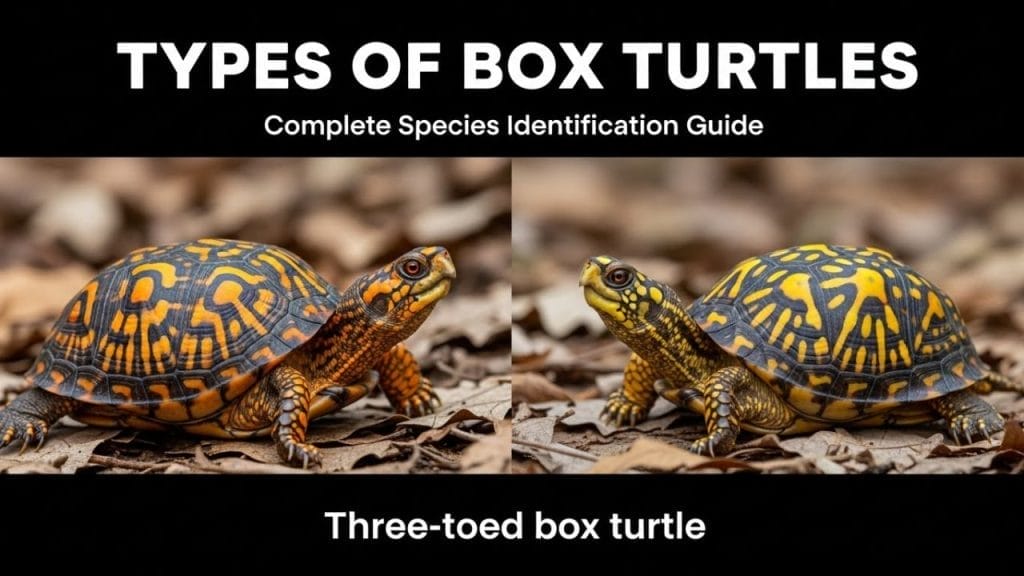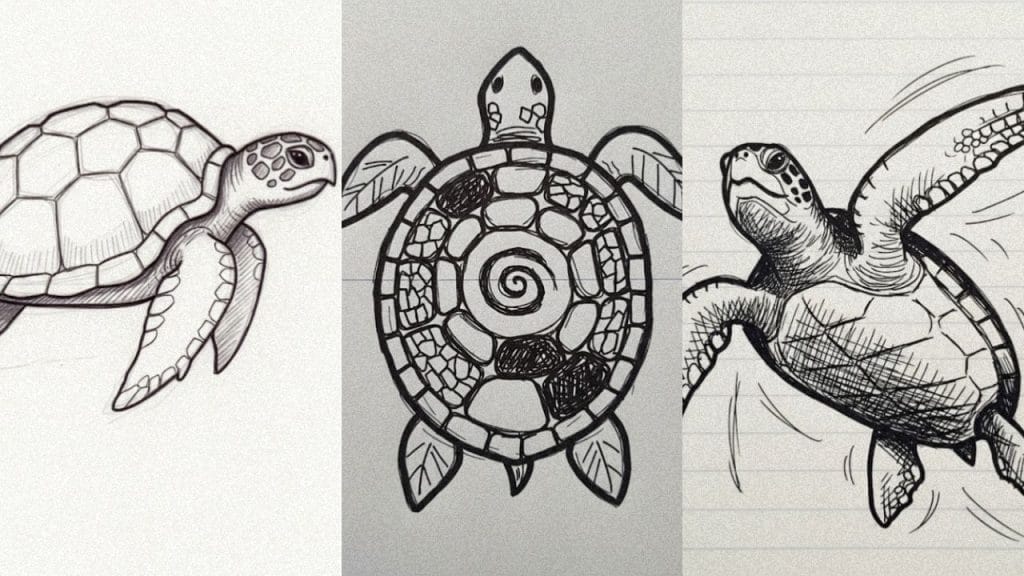Which Sea Turtles Are Endangered? [7 Comprehensive List]

This post was created with help from AI tools and carefully reviewed by a human (Muntaseer Rahman). For more on how we use AI on this site, check out our Editorial Policy.
What will happen if all the sea turtles disappear all of a sudden? Though it sounds impossible now, the day is not far from us. We are killing these majestic creatures knowingly or unknowingly without any attempt to save them. No wonder why these sea turtles are endangered.
Apparently, all 7 sea turtle species are threatened or endangered in some areas. While Kemp’s Ridley and Hawksbill sea turtles are critically endangered, loggerhead sea turtles are the least vulnerable. Green sea turtles, leatherback sea turtles, and flatback sea turtles are also in danger of extinction.
Should you be worried about the declining population of marine turtles? How can you help to save this species? Let’s find out.
Which Sea Turtles Are Endangered? [Comprehensive List]
Unfortunately, each sea turtle species is at risk of extinction. Though some people keep flatback sea turtles out of this list, they are not entirely out of this danger. In short, each marine turtle species is either threatened or endangered.
Here is a more detailed discussion on the conservation status of each sea turtle species,

Track A Real Sea Turtle With Each Bracelet!
Learn Name
You get to learn your sea turtle’s name, size, age. Also a picture!
Enjoy Stories
Enjoy the story of your sea turtle, where it came from, where is it going?
Follow Me
You get to follow the sea turtle’s journey on an interactive tracking map!
Click Here & Use Coupon Code: THETURTLEHUB20 For A 20% Discount!
1. Green Sea Turtle (Endangered)
Green sea turtles live in the water of tropical and subtropical regions. As these turtles are most abundantly found in the coastal areas, they have fallen victim to poaching.
Because of the exploitation, the US government has tagged this species as endangered. Even IUCN has also listed green sea turtles as endangered.
The concerned authorities have enforced an endangerment act to save this species. Thanks to this program, there is progress in the overall green sea turtle population.
In fact, a few islands have taken several strict steps to protect green sea turtles. Now, after 50 years, there is a spike in the green sea turtle number in these areas.
Right now, more than 90000 female green sea turtles nest every year.

This Hilarious Turtle Book Might Know Your Pet Better Than You Do
Let’s be real—most turtle care guides feel like reading a textbook written by a sleep-deprived zookeeper.
This one’s not that.
Told from the snarky point of view of a grumpy, judgmental turtle, 21 Turtle Truths You’ll Never Read in a Care Guide is packed with sarcasm, sass, and surprisingly useful insights.
And hey—you don’t have to commit to the whole thing just yet.
Grab 2 free truths from the ebook and get a taste of what your turtle really thinks about your setup, your food choices, and that weird plastic palm tree.
It’s funny, it’s honest, and if you’ve ever owned a turtle who glares at you like you’re the problem—you’ll feel seen.
2. Leatherback Sea Turtle (Vulnerable)
IUCN has listed leatherback sea turtles as vulnerable. But in some areas, this species is tagged as critically endangered, depending on their population.
For example, leatherback sea turtles are the most endangered in the Pacific region. Roughly 2300 adult females are left in this water to carry on the population. As a result, 75 – 90% less nesting is observed throughout the Pacific. The population decline is also noticed in Mexico, India, Malaysia, Sri Lanka, Costa Rica, Thailand, Tobago, etc.
The number of leatherback sea turtles is decreasing because of poaching and killing. Thus, the concerned authorities have brought this species under the endangerment act to save them.
Though the leatherback sea turtle population is bouncing back, it is still not satisfactory. More work needs to be done to protect this species from extinction.

Snuggle a Plush. Track a Turtle.
🧸 + 🌊 = 🐢 A toy that connects you to real sea turtles in the wild.
Meet Your Turtle
Scan the tag to meet your real sea turtle. Learn its name, species, and see a real photo!
Follow the Journey
Watch your turtle swim across the ocean using the 3D tracking map. It’s like a sea adventure in your pocket.
Support Wildlife
Every plush supports turtle conservation efforts through the Sea Turtle Conservancy.
Click Here & Use Coupon Code: THETURTLEHUB20 For A 20% Discount! (Your hug helps a turtle.)
3. Hawksbill Sea Turtle (Critically Endangered)
The hawksbill sea turtles were listed as critically endangered in 1970. These turtles were hunted for thousands of years, and of course, climate change has also affected their population.
Though acts are enforced to save this species, there are no significant changes in their overall numbers. Again, it is pretty challenging to count the population of hawksbill sea turtles because of their solitary nature. However, according to researchers, about 8000 female hawksbill sea turtles are here for nesting.
Hawksbill sea turtles live around Yemen, the Red sea and Oman. The largest nesting site of this species is located on the Caribbean coastal beaches. Because of the population decline, these turtles are rarely seen nesting in the community.

4. Kemp’s Ridley Sea Turtle (Critically Endangered)
Just like the hawksbill sea turtles, the Kemp’s Ridley sea turtles were also listed as critically endangered in 1970. This species is protected under the Federal Endangered Species Act in the USA. Similarly, in most other countries, the concerned authorities have enforced strict laws and regulations to save the population.
According to the research of 1942, about 42000 Kemp’s Ridley sea turtles nest at Rancho Nuevo in just one day. This number decreased to 1429 in 1995, but recently, the population has been increasing slowly. As per a report of 2004, more than 7100 female Kemp’s Ridley sea turtles were spotted in the region.

5. Olive Ridley Sea Turtle (Vulnerable)
Though the conservation status of the Olive Ridley sea turtle is not as severe as other species, you can not ignore its declining population. A study indicates that these turtles have reduced by 80% in numbers since 1967. Because of such an alarming situation, this species is tagged as endangered on the Pacific Coast of Mexico.
We are witnessing this population decrease mainly because of nearshore trawl fisheries. But luckily, the authorities have handled the situation to an extent by enforcing conservation law.
Now you can see a rise in the Olive Ridley sea turtle population in many regions, including Mexico, Costa Rica, and the Indian Ocean. Recently, about 398000 female Olive Ridley nests have nested in Gahiramatha, Bhitarkanika, in just one year. Hopefully, this number will increase with the years.

6. Flatback Sea Turtle (Vulnerable)
The population of flatback sea turtles is not as alarming as other species. According to IUCN, flatback sea turtles are only vulnerable in Australia.
Experts have guessed several reasons why this species has escaped exploitation. For example, there is a low demand for flatback sea turtle meat on the market. Again, these turtles live in the deep ocean and barely come to the coastal areas. As a result, they rarely fall victim to ghost fishing or such incidents.
The Australian government has brought flatback sea turtles under the Australian Commonwealth’s Endangered Species Protection Act. Consequently, you can see progress in the number of these turtles around the Australian water.

7. Loggerhead Sea Turtle (Not Extinct)
Loggerhead sea turtles are listed as endangered in a few areas due to the reduction in their population. To this date, South Florida and Oman host the largest nesting community for loggerhead sea turtles.
The number of nesting turtles in these two areas crosses 10000 each year. Again, around 100000 female loggerhead sea turtles nest collectively in the USA. But recently, the nesting population has been declining.
This population is declining throughout the world. For example, the number of nesting loggerhead sea turtles in the Pacific has reduced to 50 – 90%. According to statistics, in 1977, about 3500 female turtles nested yearly in the South Pacific. But this number has decreased to 500 nesting turtles recently. However, the population is increasing with the endangerment protection act.
Why Are Sea Turtles Endangered?
The Sea turtle population is declining day by day. As per a rough estimation, about 6.5 million sea turtles are left in the world. If you specifically talk about Kemp’s Ridley sea turtle, their population is less than 10000. It means this species is on the verge of extinction. While natural disasters play a minor role in this, humans are mostly responsible for such severe situations.
Marine turtles are most exploited for their meat, egg, shell and bone. Killing and eating turtle meat and soup in many coastal areas is considered a sacred ritual. Again, you will find exotic sea turtle dishes in many top-class restaurants.
Moreover, turtle shells and bones are used for making sculptures, comb, showpieces, jewellery, etc. Even as per some old scripts, turtle shells or bone powder have healing qualities.
In short, poaching sea turtles in this way is why they are endangered.
Just like meat, sea turtle eggs are also in demand. Many locals hunt for marine turtle nests and sell the whole clutch at a low price.
Even if humans do not poach the nests, the predators often feast upon the eggs. Raccoons, foxes, dogs, coyotes, etc., have a nose for searching the turtle nests.
Because of such exploitation and surroundings, only 1% of the eggs can make it to the ocean. Among them, only a few turtles can survive the rough sea till adulthood.
Furthermore, humans are turning the ocean into a trash can. They dump plastic, chemical and industrial wastes directly into the sea. Therefore, the water is getting unsuitable for marine turtles, and they are facing habitat loss.
In addition to that, the plastic dump is creating another issue. It is assumed that more than half the sea turtle population have tasted plastic at least once in its lifetime.
Though most sea turtles are herbivorous in their adulthood, they eat protein at an early age. These turtles often mistake the floating plastic as their prey and feast upon them. But unfortunately, sea turtles’ digestive system is not programmed to decompose the plastics and cause intestine blockage. So, eventually, those turtles die suffering.
Again, you can not ignore the problem of ghost fishing. Every day hundreds of sea turtles get trapped in fish traps and die. Sometimes these creatures get tangled up in the nets or hooks and drown in the sea. It may sound impossible, but sea turtles can drown.
Finally, we are witnessing more natural disasters and habitat loss of sea turtles because of climate change. These calamities have a negative impact on the sea turtle’s overall population.
What Happens If Sea Turtles Go Extinct?
When learning about the ecosystem and food chain in my high school, my teacher said something interesting that stayed with me. He emphasized the survival of each and every species and breed living in this world. According to him, if we lose one species, the rest will collapse.
Now that I study and research sea turtles, I can surely feel his thoughts. To many of us, marine turtles are just another random animal. But little do we know how much our ecosystem depends on this species.
Allow me to explain it to you in brief.
Different marine lives, including turtles, basically live on seagrass. However, this grass needs to be cut for functionality. Sea turtles do the maintenance of the seagrass by chewing the leaves.
If the sea turtle is out of the equation, the seagrass beds will be of no use to many marine lives, and they will go extinct. In many cases, we depend on those marine creatures for food. It means we will also feel a food crisis.
Again, the migration of sea turtles plays a significant role in the dune ecosystem. Hence, the absence of these creatures will increase erosion and more natural calamities.
These are just two consequences we will face if sea turtles go extinct. There are many more after-effects that we have to fight eventually. Hence, it is wiser to work on conserving these turtles instead of encouraging exploitation.
Things We Can Do To Help Sea Turtles
Of course, the extinction of sea turtles will do no good to us. So, why not help these creatures to live freely and more comfortably? Here I have listed 12 things we can do to help sea turtles,
- Do not throw plastic on the beach or ocean. Use the nearest trash cans on the beach or carry the garbage with you for the time being.
- The nesting areas of sea turtles need to be protected. The gravid turtles will refuse to lay eggs and return to the water if there is a constant disturbance in the zone.
- Make sure the nesting zone has no floodlights or flashlights nearby.
- Keep the area between the nests and the ocean free of sandcastles, chairs, or recreational things.
- There should be no chemical industries near the ocean. Even the farmers should be encouraged to use limited pesticides on the lands.
- It is appreciated if you do not use fireworks or balloons at beach parties. The fancy product just adds up the ocean waste, besides disturbing the sea turtles.
- When roaming in the ocean on your boat, make sure to keep it at a limited speed. If you spot a sea turtle while on the ship, maintain your distance.
- If you are a fisherman, follow the rules and regulations strictly.
- Try to reduce your carbon footprint in every aspect of life.
- Encourage turtle tourism. Go snorkelling with turtles and turtle watch by following proper rules.
- Inform concerned authorities if you get a hint of illegal sea turtle business.
- Volunteer in sea turtle organizations to clean beaches and make people aware of the situation.
Can You Keep A Sea Turtle As A Pet?
According to Florida state law, possessing sea turtles or their parts is a federal offence. You can be jailed for 6 months or fined between $10000 – $25000. However, this rule is not just limited to the illegal possession of sea turtles. You can be fined and punished if you disturb or touch marine turtles.
My previous article mentioned violation history penalties for sea turtles in different situations. You can definitely check that piece for more information.
However, from the rules, it seems that you can not have sea turtles as a pet. Well, that is not true. You can adopt sea turtles as a pet, but only virtually.
Our indoor or outdoor environment prevents us from capturing marine turtles. We can not recreate the ocean environment in any way. Though baby sea turtles can survive out of the ocean for a few months, soon, this environment will suffocate them to death.
But hey! Marine research and helping organizations have planned a program where you can adopt a sea turtle. See, thousands of marine turtles each year come to the shore and nest for days. All these nests require protection from illegal businessmen and predators. But it will take thousands of dollars to ensure such protection.
Considering the situation, the marine organizations have welcomed donations from turtle lovers. But of course, in exchange, you get to sponsor a clutch or just one egg. The team ensures that that clutch or egg is secured and makes it to the ocean healthy. In many cases, the researchers put a tracker on the turtle, which keeps you updated about its whereabouts for years.
So, sponsoring a sea turtle allows you to adopt it forever. You will get a certificate and different gifts. Not only that. In doing so, you are actually saving a life and contributing to preserving the conservation status of marine turtles.
Conclusion
All sea turtle species are threatened. Kemp’s Ridley and Hawksbill sea turtles are at a high risk of extinction. But thankfully, the population of marine turtles are bouncing back and rising because of the Endangered Species Protection Act.

About Author
Muntaseer Rahman started keeping pet turtles back in 2013. He also owns the largest Turtle & Tortoise Facebook community in Bangladesh. These days he is mostly active on Facebook.
















